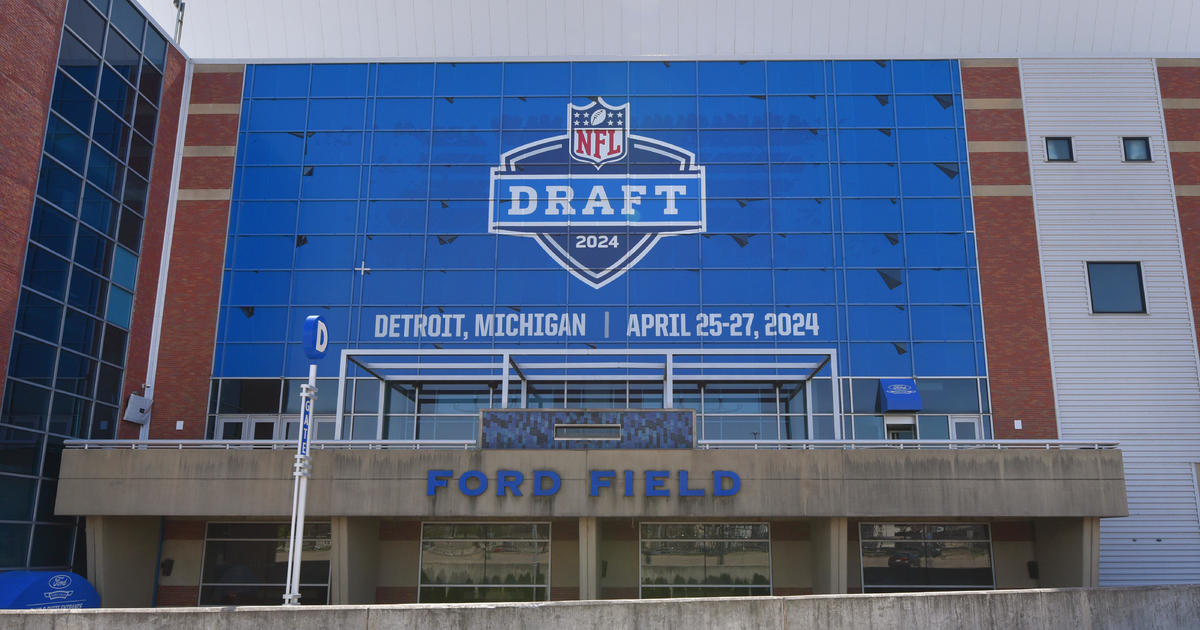Macomb College Event Looks At 'New Blue Economy'
In an increasingly thirsty world, Michigan sits smack in the middle of 20 percent of the world's fresh water supply.
Besides requiring serious stewardship, it's also a massive economic opportunity.
Around 150 government officials, engineers, community planners and business executives gathered Friday at Macomb Community College for "Reinventing Southeast Michigan: How To Be A Part Of The New Blue Economy" to sort out the issues.
Nearly a dozen speakers offered case studies and best practices on how to turn waterfront, from the Great Lakes to rivers to small streams, into economic development, while cleaning up and then preserving the pristine natural resource that draws people to the water's edge in the first place.
"This can't be just a nice thing to do for the environment," said John Austin of Ann Arbor, a nonresident senior fellow with the Washington, D.C. think tank, The Brookings Institution. "In Michigan, it has to be about jobs, replacing jobs lost in the whole automotive ecosystem."
Brian Donovan, East Grand Rapids city manager, kicked off the event with a historic perspective on how the suburb has used Reeds Lake, a 265-acre lake within its borders, as an economic resource, while preserving its pure waters. From an amusement park that closed in the 1950s to today's canoe and kayak liveries, from shops and schools overlooking the water to parks and open spaces, Donovan said Reeds Lake helps define East Grand Rapids as a great place to live.
The city's efforts to maintain the lake include rain gardens around it, storm water-sewer separators, a phosphorous fertilizer ban in the lake watershed, and a green roof at the lakefront community center.
Greg Hoffman, of the Maryland-based Center for Watershed Protection (www.cwp.org, www.awsps.org), presented the results of scientific studies showing that any watershed with more than a 10 percent impervious cover -- that means streets, roofs and parking lots -- faces serious environmental risk.
Tools to fight that risk include better site design, including elements like green roofs and green buffer zones.
Over lunch, Austin argued that Michigan is one of the few places on earth where long-term sustainable population and economic growth is even possible -- because of its fresh water.
"We have water we can use and even re-use, if we do it right," Austin said.
Yes, water is magic, a place definer. But it's also an absoute requirement for virtually every industry you can name. And it's in very short supply in most of the Sunbelt areas of America that have seen the most economic growth in recent decades -- which is "why they're trying to steal it," Austin said.
Water-based clean tech industries are a serious economic possibility for the state, he said.
John Hartig, manager of the Detroit River International Wildlife Refuge, said sustainable redevelopment is the Detroit area's next "paradigm shift," along the lines of the area's development as a fur trapping center, a shipping center and the Arsenal of Democracy.
Plans for the refuge include a LEED Platinum-certified visitor center and from the north end of the refuge linking parks to the south for a total of 12 miles of trails.
Doug Denison, director of environmental services for JJR LLC in Ann Arbor, presented a case study on "Ellias Cove -- Back from the Black Lagoon." The reference to the 1950s horror movie was intentional -- the project he spoke rehabilitated a highly toxic site along the Detroit River in Trenton that included PCBs, mercury, oil, lead and zinc. Nearly 120,000 cubic yards of contaiminated soil and bottomland were removed. Soon the site will be a park and marina.
Steve Remias, president and CEO of MacRay Harbor on Anchor Bay and president of the Lake St. Clair Tourism Initiative, spoke of making Lake St. Clair a tourism destination on a par with West Michigan beach towns like South Haven and Grand Haven and northern Michigan tourism hot spots like Traverse City and Mackinac Island. The initiative's motto is "promote, protect, preserve," and its membership includes local economic development and marine industry leaders.
The initiative's Web site is up and running at www.TourLakeStClair.com.
Nina Misuraca of the Oakland County Planning and Economic Services department and Gerry Santoro of the Macomb County Planning and Economic Development Services wrapped up the event with their presentations
Oakland County is home to more than 1,500 lakes and is the headwaters of five southeast Michigan river systems -- the Rouge, the Huron, the Clinton, the Shiawassee and the Flint. Water has a $201 million annual economic benefit to the county, from wildlife viewing to fishing to boating to swimming.
Oakland County is also putting up signs to identify watersheds, and road signs on bridges over rivers indicating the distance to Lake St. Clair.
Santoro noted that the delta of the St. Mary's River into Lake St. Clair is the largest all-freshwater delta in the world. Also, the Clinton River watershed is Michigan's most populated, with 1.4 million people, creating special challenges.
(c) 2010, WWJ Newsradio 950. All rights reserved.



